
views
Learning to Paraphrase

Understand the passage. Whenever you conduct research, it is essential to be able to take the ideas of others and translate them into your own words. In order to do this, you must first understand the passage you intend to translate. Read this passage over several times. Stop to look up words you don’t understand. Make sure you grasp the message in its entirety. Take notes, if you have to. If this is your personal text book and not a borrowed one, consider highlighting the text or writing in the margins.

Set the original aside and write down what it said without looking. This will force you to translate the author’s text into your own. You may find that the parts you can easily recall are the most significant. If you are working digitally, avoid using "copy" and "paste." You don't have to write it down word-for-word. Just write the gist of the passage.

Add some additional notes about the context of the passage. Ask yourself these questions: Where was the passage located? What came before it? What else might the reader need to know to understand this passage? Why was this passage important to you?

Double check the original. Go back to the original and read it over. Make sure you accurately represented the message. Update your work to include any significant omissions. You want to be sure that the main idea of the passage is still the same.

Use quotation marks. If there are any unique phrases or terms that you borrowed directly from the original, you must use quotation marks to signal them. Placing quotation marks around a few key words in your paraphrase gives credit to your source and preserves the integrity of the main idea, without relying too heavily on direct quotes.

Cite your source. Write down any relevant information about your source. This should include the title, author, and date of publication. Refer to a specific style-guide (MLA, APA, AP, or Chicago style) to determine how your citation should appear in your paper. For now, just make sure you have this information handy. You may also want to return to this source for additional information. Specific style-guides change often. If you are using a style-guide text book, make sure that it is the more recent version. Another option is to use a website.
Quoting Effectively
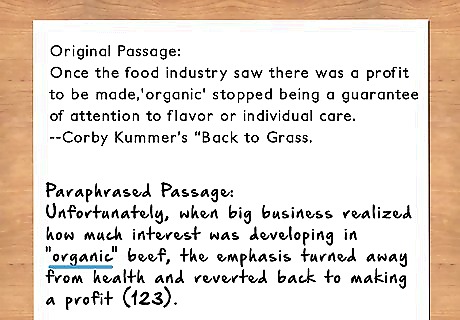
Decide that a quote is needed. The concept of using a quotation may seem like the opposite of “writing in your own words.” However, learning to use a quote the correct way is an essential writing skill. First, you must understand when to use a direct quotation. Use a direct quotation in order to: Argue against another author’s specific idea Continue another author’s specific idea Prove your own point with the help of another author Add eloquence or power with a very meaningful quote
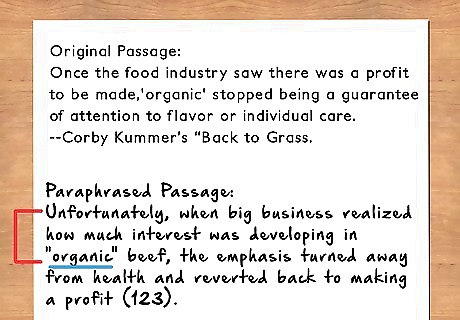
Contextualize the quotation. A quote should never appear all by itself. Instead, you need to place the quote into the context of your essay. Write a sentence or two that leads up to the quotation, demonstrating the need for this particular voice. Be sure to provide the reader with any information they may need to understand this particular quote.

Introduce the quote. The first time you bring a writer’s words into your own text, introduce the quote with a “signal phrase.” This should always include the name of the person (or persons) who wrote the words, as well as the full title of the work from which the quote is taken. Here are two examples: In his book End of Humanism, Richard Schechner states, “I prefer to work from primary sources: what I’ve done, what I’ve seen” (15). As Dixon and Foster explain in their book Experimental Cinema, “filmmakers assumed that the audience for their films was to be an intimate group of knowledgeable cineastes” (225).
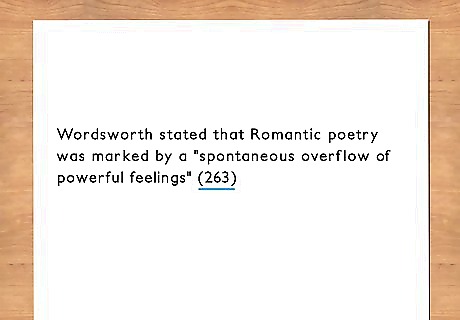
Check your format. The proper way to format both your quote and the citation for your quote will depend on the style-guide you are following (MLA, APA, AP, or Chicago style). The specific rules of block-quoting, citation, and even the placement of the quotation marks will be determined by the style guide you use. (The citations provided above are done in MLA format). In general, your quote should not exceed 3-4 lines of text. If it does (and it is truly necessary), you will need to use block quote formatting. At the end of the quote, include any relevant data that you have not already stated, such as the name of the author, the page number, and/or the date of publication.

Cite the author. No matter what style guide you choose, you must always cite the author you quote. This is a crucial step and must never be skipped. Anytime you use the exact phrasing of an author, you must place this phrase in quotation marks and include the name of the author. Forgetting this step is unethical. It also puts you at risk for plagiarism. If there is no specific author, then use the editor instead, or whatever your specific style-guide requires.
Building Your Writing Tool-kit

Read everything you can get your hands on. The more you read, the more you will be inspired to write. You will begin to naturally pick up rules of grammar and new writing styles. You will become more familiar with different styles, genres, and literary devices. By getting a sense of what sort of writing you like, you will begin to develop your own writing style.
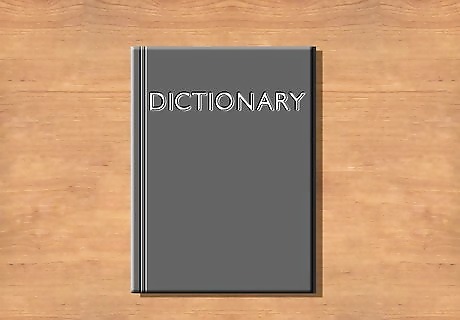
Expand your vocabulary. The more words you have access to, the better you will be able to communicate your ideas. With stronger vocabulary is, it will be easier for you to paraphrase the writing of others. When you encounter a word you don’t know, look it up! Browse a dictionary or thesaurus for fun. Talk to others. The spoken word is a great source of new and exciting vocabulary.
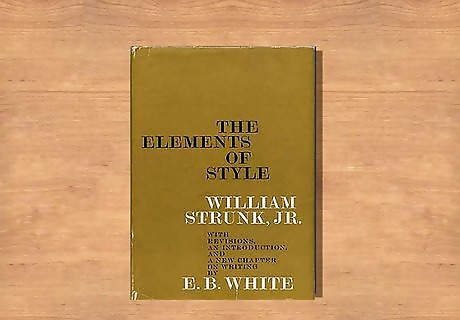
Brush up on grammar rules. If you don’t understand the basic mechanics of sentences, you’ll always have trouble constructing them. When you maintain a grasp on the basics of grammar, your unique words can flow freely and be easily understood by your readers. Study some resources on grammar and style in order to fortify your knowledge. A good resource is Strunk and White’s Elements of Style. Another great resources is Stephen King’s On Writing: A Memoir of the Craft.
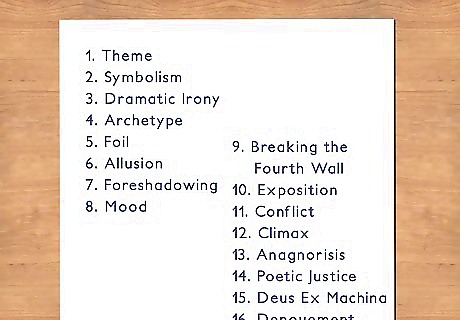
Learn some key literary devices. Literary devices, such as theme, symbolism, and dramatic irony, can be used to make your essay more interesting and to express a deeper message. Even academic essays can benefit from the use of appropriate literary devices. Theme: A common thread or idea that is appears throughout a literary work. Symbolism: An object, character, or color that is used to represent an important idea or concept. Dramatic Irony: Irony that occurs when the meaning of the situation is understood by the audience but not by the characters.

Explore different writing methods. Try to write using a variety of locations and tools. For example, try using a notebook and pen at a coffee shop, or typing on your laptop at home. In fact, writing with a paper and pen will make you less likely to copy, and more likely to paraphrase. Try composing a personal diary entry or a letter to a friend. All of these methods will help you to further develop your own writing style, as well as improve your skills of organization and composition.
















Comments
0 comment